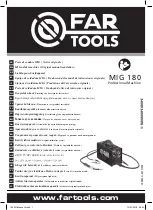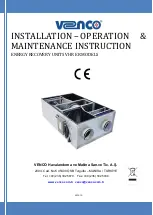
3-15
2012.12
Maintenance - STACKY
E - OCCASIONAL
E1 - BATTERY FAILURE
CHANGE
Handling and servicing a battery can be dangerous, take the following precautions :
• wear protective goggles and clothing,
• hold the battery horizontally when handling,
• never smoke or work near a naked flame,
• work in a well-ventilated area,
• in the event of electrolyte being spilled onto the skin or splashed in the eyes, rinse thoroughly with cold water
for 15 minutes and call a doctor.
If the fully charged batteries do not allow the stacker to be used for a sufficiently long
time, they need to be replaced . Only use original equipment batteries for this operation .
- shut-down the machine and remove the cover,
- disconnect the cable connecting the two batteries together (1) (fig . E1) then
disconnect the two remaining terminals (2) (fig . E1),
- loosen the screws of the fixing brackets (3) (fig . E1) and lift out the batteries by means
of the grips provided for this purpose (4) (fig . E1),
- clean the battery support,
- install the new batteries and attach with the brackets,
- connect the battery cables in the reverse order to that in which they were removed,
- put the cover in place .
During the various stages of this operation, be careful not to damage the electric cables
with the tools used .
E2 - HANDLING
Never lay the stacker on its side as the oil from the hydraulic system and the
battery electrolyte would leak from the filler caps.
A sling attachment point has been provided on the machine for ease of handling by
(overhead) crane (fig . E2) . Check that the equipment used is of sufficient capacity and
select a suitable sling .
The weight of the machine is indicated on the name plate (unladen weight) .
Position the machine under the crane and apply the parking brake . The fork or tool
must be unladen and in the down position .
An adhesive label indicates the slinging point on the stacker . Only lift the stacker via this
point . Attaching the sling to any other point may present a risk .
E3 - TRANSPORT
Never lay the stacker on its side as the oil from the hydraulic system and the
battery electrolyte would leak from the filler caps.
The transporter must read this section of the instruction manual .
Once the stacker is loaded on the lorry, the following precautions are to be taken
(fig . E3) :
- place the fork or tool in the down position,
- wedge the stacker with wooden blocks to prevent it moving during transport,
- secure the stacker with belts to avoid any risk of overturning .
The stacker must be loaded and unloaded in accordance with best practice . The
following precautions are to be taken when using a tail-lift :
E3
E2
E1
1
3
3
3
3
4
2
4
Summary of Contents for STACKY 10 FR D28
Page 2: ...STACKY 10 FR D28 STACKY 10 LE S16 STACKY 14...
Page 4: ......
Page 5: ...1 OPERATING AND SAFETY INSTRUCTIONS...
Page 6: ...1 2 STACKY operating and safety instructions 2012 12...
Page 10: ...1 6 STACKY operating and safety instructions 2012 12...
Page 22: ......
Page 23: ...2 DESCRIPTION...
Page 24: ...2 2 Description STACKY 2012 12...
Page 36: ......
Page 37: ...3 MAINTENANCE...
Page 38: ...3 2 Maintenance STACKY 2012 12...
Page 40: ...3 4 Maintenance STACKY 2012 12...
Page 53: ...4 TOOLS...
Page 54: ...4 2 Tools STACKY 2012 12...
Page 56: ...4 4 Tools STACKY 2012 12...
Page 60: ......










































